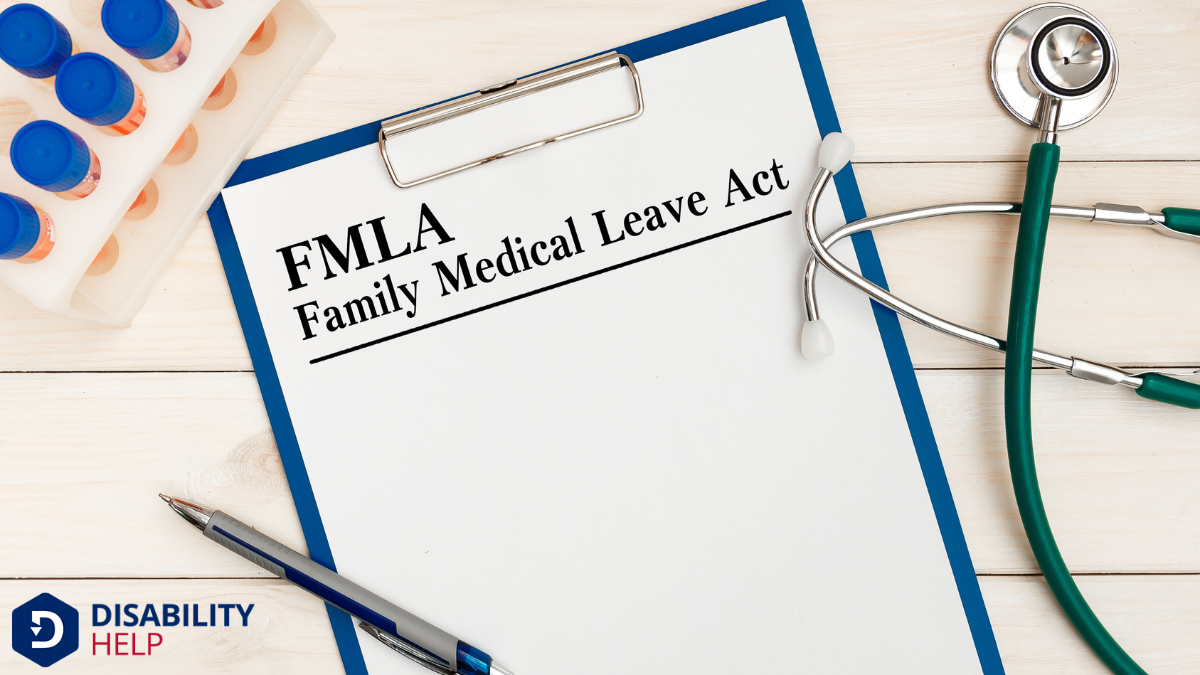While we're on short-term disability leave, our job isn't automatically protected. Federal laws like the Family and Medical Leave Act (FMLA)A U.S. law that provides eligible employees with unpaid, job-protected leave for family and medical ... offer some job security, but eligibility depends on meeting specific criteria. State laws and employer policies can also play a significant role in determining job protection. It's vital for us to be informed about these regulations and communicate with our employers to understand our rights fully. Let's explore further to guarantee we're well-prepared.
Key Takeaways
- Short-term disability leave itself does not guarantee job protection; check employer policies for specific job security measures.
- FMLA offers job protection if eligibility criteria are met, providing up to 12 weeks of unpaid leave.
- State laws may offer additional job protection during short-term disability; verify with local regulations.
- Communication with HR is crucial to understand company-specific leave policies and job protection.
- Familiarity with employer reinstatement procedures ensures a smoother return post-leave.
Understanding Short-Term Disability Leave
When it comes to understanding short-term disability leave, it's vital that we first grasp what it truly entails.
Short-term disability leave provides us with temporary financial support if we're unable to work due to a medical condition. This type of leave typically covers a portion of our salary for a limited period, generally up to six months.
It's important to recognize that eligibility and specific benefits can vary greatly depending on our employer's policies or our insurance plan.
We should communicate directly with our HR department or insurance provider to clarify our coverage. Understanding these details helps us make informed decisions and prepare adequately.
The Role of Federal Laws

As we explore job protection during short-term disability leave, federal laws like the Family and Medical Leave Act (FMLA) and the Americans with Disabilities Act (ADA)A U.S. law that prohibits discrimination against individuals with disabilities in all areas of publi... play vital roles.
These laws help guarantee that we've job security while managing our health needs.
It's important to understand how they intersect with short-term disability coverage to protect our employment rights.
Family and Medical Leave Act
The Family and Medical Leave Act (FMLA) serves as a cornerstone of federal laws that protect employees' job security during short-term disability leave. Under FMLA, eligible employees can take up to 12 weeks of unpaid leave in a 12-month period for specific family and medical reasons, including personal health conditions.
Importantly, the FMLA guarantees that our job is protected, meaning we can return to the same or an equivalent position after our leave ends. To qualify, we must work for a covered employer, such as a public agencyThe capacity of individuals with disabilities to act independently and make their own choices. or a private-sector employer with 50 or more employees.
Additionally, we need to have worked at least 1,250 hours over the past year. Understanding the FMLA helps us feel secure when managing health challenges.
Americans With Disabilities Act
While maneuvering through the complexities of job protection during short-term disability leave, we also need to take into account the Americans With Disabilities Act (ADA), another key federal law.
The ADA plays a critical role in protecting employees with disabilities. Here’s how it helps us:
- Reasonable AccommodationsModifications or adjustments in healthcare settings to support patients with disabilities.: Employers must provide adjustments to the workplace or job tasks to help us perform essential duties.
- Non-Discrimination: It prohibits discrimination based on disability, ensuring equal treatment in hiring, promotions, and other employment areas.
- Confidentiality: Employers must keep our medical information private, sharing it only when necessary.
- Retaliation Protection: We’re protected from retaliation if we exercise our rights under the ADA.
Understanding these provisions empowers us to navigate our rights effectively.
Short-Term Disability Coverage
Steering job protection involves understanding not only the ADA but also the role federal laws play in short-term disability coverage.
While the ADA is essential, it’s important to note that federal laws don’t directly mandate short-term disability benefitsFinancial assistance provided to individuals who are unable to work due to a disability, such as Soc.... Instead, they usually come from employer policies or state programs.
However, federal laws, like the Family and Medical Leave Act (FMLA), can provide indirect support. FMLA allows eligible employees up to 12 weeks of unpaid leave, which can coincide with short-term disability, offering job protection during this period.
It’s critical to verify that our employer’s policies align with these legal frameworks. We should also examine any state-specific laws that might enhance these protections, confirming we’re fully covered while on leave.
Key State Regulations to Know
Maneuvering the landscape of state regulations on job protection during short-term disability leave can be complex, but understanding key differences is essential for both employers and employees.
We must recognize that state laws vary greatly, affecting how job protection is handled. In some states, specific regulations provide a safety net for employees, while others may not offer the same level of security.
It’s important to pay attention to:
- State-mandated disability programs: Some states have their own programs that include job protection.
- Leave duration limits: States may define specific lengths for leave.
- Eligibility criteria: Varying requirements can affect who qualifies for leave.
- Interaction with federal laws: State laws may complement or differ from federal regulations, influencing job protection.
Understanding these can guide us in maintaining job security during our leave.
Employer Policies and Job Security
Let's explore how company leave policies, alongside legal job protections, impact our job security during short-term disability leave.
It's essential that we comprehend our rights and the specific policies our employers have in place, as these can vary widely.
We'll also discuss how our jobs are protected and what the process looks like for reinstatement after our leave ends.
Company Leave Policies
When maneuvering company leave policies, understanding the nuances of employer policies is essential for ensuring job security during a short-term disability leave.
It's vital to know what our company offers and how it impacts our position. Here are several factors we should consider:
- Leave Duration: Know how long our short-term disability leave lasts and any extensions available.
- Job Protection: Determine if our position is protected during and after our leave.
- Benefits Continuation: Check if health benefits continue during our leave and under what conditions.
- Notification Requirements: Understand any obligations to inform our employer about our leave and expected return.
Legal Job Protections
While on short-term disability leave, understanding the legal job protections available to us is vital for maintaining our job security. Unfortunately, short-term disability leave itself doesn’t guarantee job protection.
However, other legal frameworks might offer some coverage. The Family and Medical Leave Act (FMLA) is a primary example, which provides eligible employees up to 12 weeks of unpaid leave with job protection.
We must meet specific criteria under FMLA, such as working for a covered employer and having been employed for at least 12 months. Additionally, state laws may offer further protections, varying by location.
It's essential we familiarize ourselves with both federal and state regulations, ensuring we're aware of our rights and how they apply to our unique situation.
Reinstatement After Leave
Although short-term disability leave doesn't inherently safeguard our positions, many employers have policies in place to support our return to work. Understanding these policies can help us feel more secure.
Here are some common practices:
- Written Policies: Employers often outline clear guidelines on reinstatement in employee handbooks.
- Open Communication: Maintaining regular contact with HR can provide updates on our job status.
- Job Protection Agreements: Some workplaces may offer contractual agreements ensuring job security during leave.
- Return-to-Work Programs: These programs assist us in re-entering, sometimes with modified duties.
Navigating the Family and Medical Leave Act

Understanding the Family and Medical Leave Act (FMLA) is vital for those maneuvering job protection during short-term disability leave. Under FMLA, we’re entitled to up to 12 weeks of unpaid leave each year for serious health conditions, which can include time off due to short-term disability.
It’s important to know that the FMLA applies to employers with 50 or more employees within 75 miles, and we must have worked there for at least 12 months and 1,250 hours over the past year to qualify.
While on FMLA leave, our jobs are protected, meaning our employers must reinstate us to the same or an equivalent position upon our return.
Let’s make certain we communicate clearly with our HR departments to understand our rights fully.
Differences Between Short-Term Disability and FMLA
Let's explore how short-term disability and FMLA differ regarding eligibility, duration, and job protection.
While short-term disability often requires specific medical documentation, FMLA eligibility depends on tenure and hours worked.
Additionally, the FMLA guarantees job protection, whereas short-term disability may vary based on employer policies.
Eligibility Criteria Differences
When examining the eligibility criteria for short-term disability (STD) and the Family and Medical Leave Act (FMLA), it's important to recognize their fundamental differences.
Both serve unique purposes, but they cater to different needs and requirements. Let's explore the distinctions to gain a clearer understanding:
- Employment Tenure: FMLA requires at least 12 months of employment and 1,250 hours worked, while STD often has no such tenure requirements.
- Employer Size: FMLA applies to employers with 50 or more employees, whereas STD policies may vary by provider.
- Medical Certification: Both require medical proof, but the specifics can differ notably.
- Coverage Scope: FMLA covers broader family and medical needs, while STD focuses on temporary disability due to personal medical conditions.
These criteria highlight why understanding each program is essential.
Duration of Coverage
While both Short-Term Disability (STD) and the Family and Medical Leave Act (FMLA) offer valuable support for employees, they differ markedly in their duration of coverage.
FMLA grants eligible employees up to 12 weeks of unpaid leave per year. It's ideal for those needing time off to care for themselves or family members.
On the other hand, STD coverage can vary greatly based on the insurer and policy specifics, often ranging from a few weeks to six months. STD focuses on replacing a portion of income due to personal illness or injury.
Understanding these differences helps us make informed decisions about our leave options. We need to reflect on our personal situations and choose the coverage that best suits our needs.
Job Protection Provisions
Understanding job protection provisions is essential when comparing Short-Term Disability (STD) and the Family and Medical Leave Act (FMLA).
While both serve as valuable support systems during a leave of absence, they differ considerably in how they protect your job.
FMLA, a federal law, guarantees job protection for up to 12 weeks of unpaid leave in a year for eligible employees.
In contrast, STD is typically employer-provided and doesn’t assure job protection.
Let’s break it down further:
- FMLA: Protects your job, ensuring you can return to the same or equivalent position.
- STD: Focuses on income replacement, not job security.
- Eligibility: FMLA requires meeting specific criteria, while STD eligibility varies by employer.
- Duration: FMLA offers 12 weeks; STD duration depends on the employer's policy.
Communicating With Your Employer
Effective communication with your employer is vital during short-term disability leave, as it helps maintain transparency and sets clear expectations. Keeping the lines open guarantees everyone stays informed about leave durations and possible return dates. By doing so, we prevent misunderstandings and foster a sense of trust.
It’s important to inform our employer promptly when we anticipate changes in our leave or medical status. This proactive approach shows responsibility and respect for workplace dynamics.
We should also ask about any updates in our absence, confirming we’re aligned with ongoing projects or shifts in company policies. This dialogue not only reassures them but also helps us navigate smoothly back into our roles.
Let’s remember, effective communication is our ally in maintaining job security.
Steps to Take Before You Leave

Before starting short-term disability leave, it's crucial to take proactive steps to guarantee a smooth changeover.
We should make certain our responsibilities are covered and our absence doesn’t disrupt the workplace.
Here’s how we can prepare:
- Communicate with HR: Discuss our leave plans and understand company policies regarding short-term disability.
- Notify our team: Inform coworkers and managers about our upcoming absence to help them plan accordingly.
- Organize tasks: Create a detailed list of ongoing projects and deadlines, and consider delegating tasks to colleagues.
- Set up an out-of-office reply: Prepare an email response to inform others of our leave, including when we expect to return.
Returning to Work After a Leave
As we prepare to return to work after our short-term disability leave, it’s important to ease back into our roles with a clear plan.
Let’s define our workload expectations by having a conversation with our manager. This guarantees we’re aligned on responsibilities and any adjustments needed.
We should also update our HR department on our return date and any accommodations we may need, such as flexible hours or a modified workspace. By communicating openly, we can address potential challenges early.
Gradually increasing our workload can help us manage the shift smoothly. Additionally, staying connected with colleagues during this time can rebuild our support network.
A thoughtful approach will help us reintegrate effectively and maintain our well-being as we resume work.
Resources for Further Assistance
When maneuvering the complexities of returning to work after a short-term disability leave, it’s crucial to tap into available resources that can offer support and guidance.
We can make this shift smoother by exploring various options designed to assist us. Here are some valuable resources to evaluate:
- Human Resources Department: They can clarify company policies and guide us on our rights and responsibilities.
- Employee Assistance Programs (EAPs): These programs often provide counselingProfessional guidance to help individuals cope with emotional, mental, or social challenges, particu... and support services to help us manage stress and work-life balanceThe equilibrium between personal life and work, which may require special considerations for employe....
- Legal Aid Services: For advice on employment laws and protection, consulting legal experts can be beneficial.
- Support Groups: Connecting with others who’ve experienced similar situations can provide emotional and practical insights.
Relying on these resources can ease our journey back to work.
Conclusion
In conclusion, we've explored the essentials to guarantee your job is protected during short-term disability leave. By understanding federal laws, key state regulations, and your employer's policies, we can better navigate this challenging time. It's vital to communicate openly with your employer and take necessary steps before and after your leave. Remember, resources are available to guide us through the process, securing a smooth shift back to work. Let's prioritize our health while safeguarding our job security.






